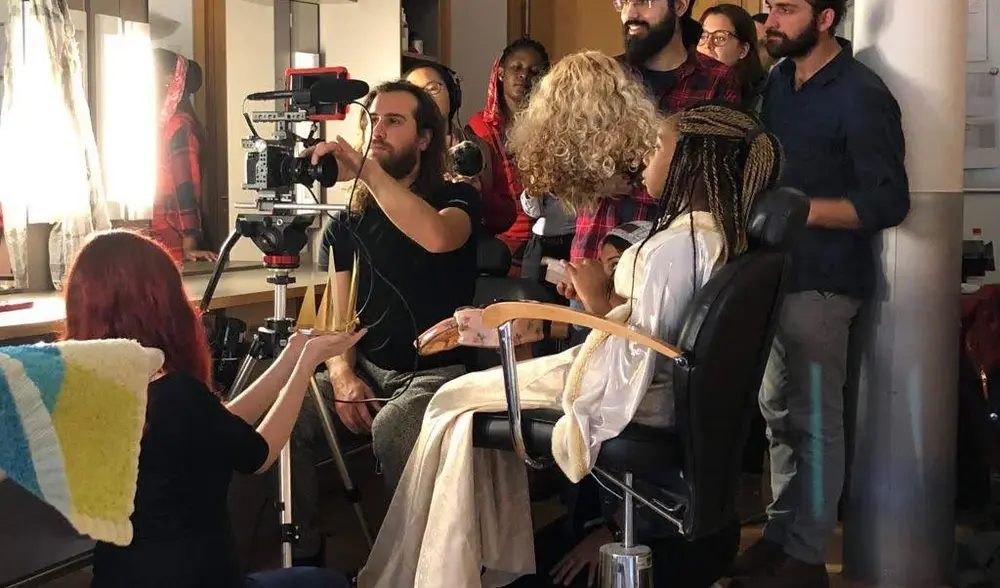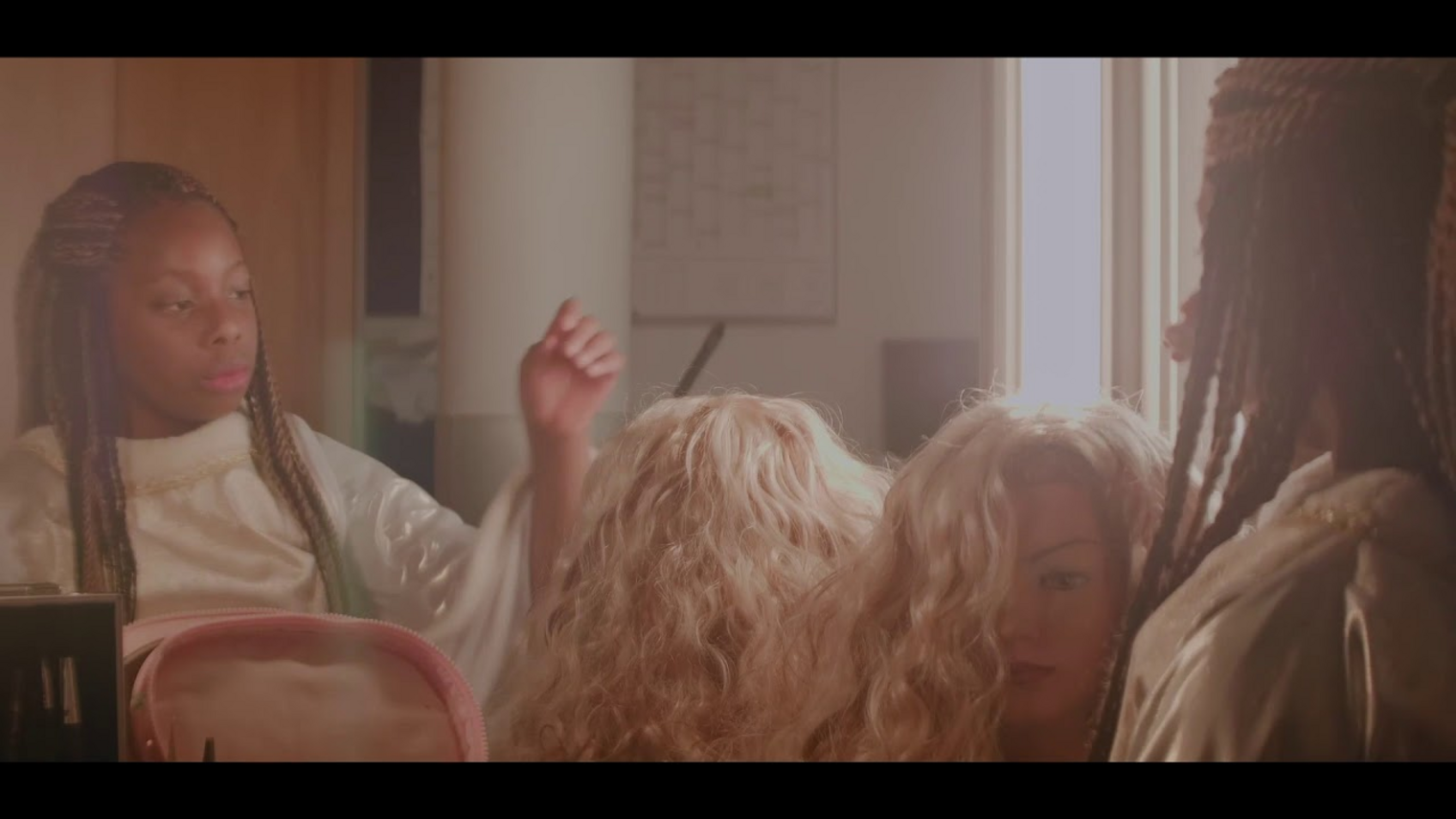Christchild: The Making of a Short Film

Aya appears in frame, wearing a long, white and gold garment. She slowly applies makeup, looking carefully in the mirror as she moves from blush, to lipstick to mascara. She hums the quiet notes of a Christmas carol while she slowly reaches off-screen. As she straightens her shoulders and sits confidently in her chair, she maintains eye contact with herself in the mirror as she steadily places a large, golden crown on her head.
“Christchild” is the debut short film for a group of students from the Brandt School. The story, written by Sophia Tomany ’20, follows the story of Aya, a 16-year-old auditioning for the esteemed role of the Christchild in the weeks leading up to Christmas. What sets Aya apart from the others auditioning is that she does not look like girls who have historically auditioned for the role: Aya is black.
The Christchild, or Christkind, is a traditional figure found in Christmas lore across Europe, including southern and western Germany. In Nuremberg, the Christchild traditionally opens the Christmas Market with a public recitation of a poem to a crowd of eager viewers. But before this glorious moment of Christmas cheer, girls between the ages of 16 and 19 apply for the role and undergo a series of auditions in order to secure the prestigious position. Her fellow citizens vote upon a Christchild, seeking the one who best represents the spirit of their community. Throughout the run of the Christmas Market, the Christkind is responsible for not only multiple appearances at the Christmas Market, but also a number of goodwill activities such as visiting hospitals, schools, and nursing homes. As the face of the Christmas spirit and an ambassador for her town, she is also expected to visit neighboring cities and give television interviews. The role of the Christchild is a significant one and carries much traditional and cultural meaning in many parts of Germany.
So much so that there has been recent controversy after a German girl of Indian-descent was appointed the role of the Nuremberg Christchild in 2019. Beninga Munsi, 17, faced harsh, race-based criticism by a local district branch of the AfD party, including comments such as her foreign identity being “a slap in the face of friends of tradition.” After Nuremberg Mayor, Ulrich Maly, had condemned the comments and calling them out as openly racist, Munsi received overwhelming support from her community and across Germany.
The film “Christchild” engages this ongoing conversation about identity, integration and culture that is ever more important in Germany. The scenes seek to portray the experience of a young girl combating these microaggressions and discriminatory misperceptions in the pursuit of her dream to become the Christchild.
The film is a culminating project for the class “Songs and Movies of War and Peace,” an elective course led by Prof Dr. Solveig Richter of the Conflict Studies program at the Brandt School. The course examined how war and the search for peace make conflict a topic of interest for both independent and Hollywood films. One of the central goals of this course was to gain a deeper understanding as to how conflict portrayed on the screen or through music brings political and social influence to society.
One way to engage this concept was through the hands-on application of creating a film that touched on the theme of discrimination. Students worked on scripts and storyboards, and after choosing a script they felt best represented the theme, they moved forward with the casting and filming process. Students participated in a two-day workshop during which they collaboratively produced the “Christchild” production. Ado Hasanović, an award-winning director and filmmaker from Bosnia and Herzegovina, supervised the workshop. Along with his collaborator and director of photography, Leonardo Kurtz, the whole team filmed all of the scenes within the course of two short days. Students of the course were taught basics of filming, sound recording and directing and were encouraged to participate in creative decision-making throughout the process.
The filming of “Christchid” has already brought some interest from the local Thuringen press. MDR broadcasted a short news segment about the filming and significance of the story. The film is expected to be completed by the end of spring, with plans to hold a premiere showing in Erfurt in early summer.
“The views represented in this opinion piece do not necessarily represent those of the Willy Brandt School of Public Policy.”
Official "Christchild" Trailer

Please note: Once you watch the video, data will be transmitted to Youtube/Google. For more information, see Google Privacy.
~ The views represented in this blog post do not necessarily represent those of the Brandt School. ~